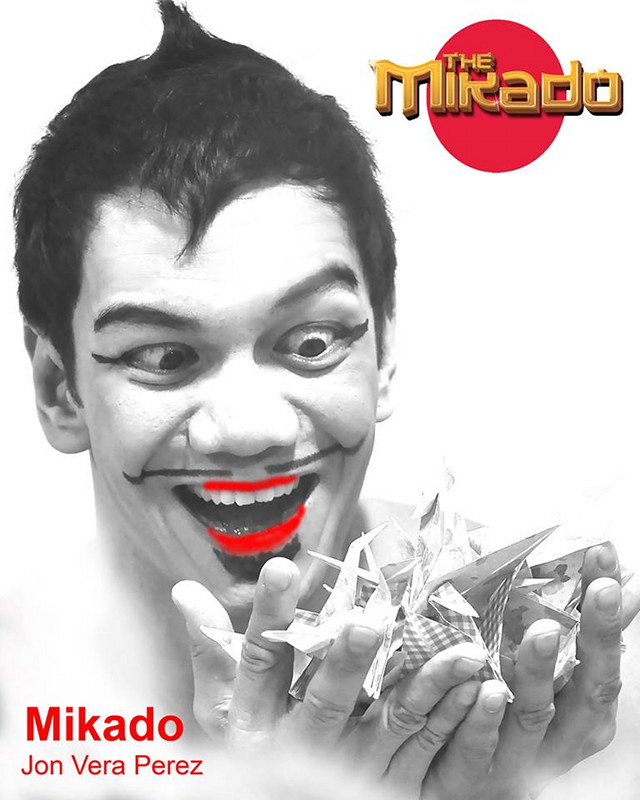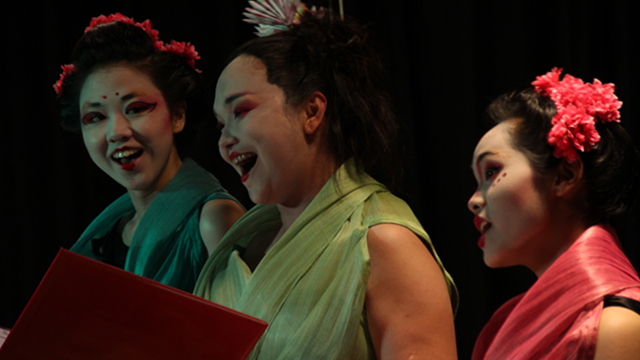SUMMARY
This is AI generated summarization, which may have errors. For context, always refer to the full article.

MANILA, Philippines – Opera is alleged to be a dying art.
In 2011, the Metropolitan Opera of America admitted that the average age of its patrons was 60 years old. In 2010, Italy’s La Scala, dependent on tax payer’s money for over 40% of it’s funding, was threatened by budget cuts necessitated by austerity measures.
Opera is supposedly a tough sell these days, and the stereotypes often stated as reasons are many:
- Entire dialogues sung in falsetto and vibrato and in a foreign language
- Outdated and misogynist portrayals of women as martyrs
- Intimidating and expensive high society occasions that demand a gilded baroque theater for its venue and gown and tuxedos for its patrons
- An art form that does not translate well and is an acquired taste
But here in Manila, opera is young, vibrant and growing. Cultivating both the artists and the audience for a new generation, Philippine Opera Company‘s Young Artists Series Season 2 featured “Mikado” last August 14 at the Opera Haus, Bautista Street, Palanan, Makati City.
 Directed by Floy Quintos, it starred Karla Gutierrez, Al Gatmaitan, Cris Go, Jun Ofrasio, Clarissa Ocampo, Jon Vera Perez, Nomer Son, Paulina Yeung and Roden Araneta.
Directed by Floy Quintos, it starred Karla Gutierrez, Al Gatmaitan, Cris Go, Jun Ofrasio, Clarissa Ocampo, Jon Vera Perez, Nomer Son, Paulina Yeung and Roden Araneta.
With music by Arthur Sullivan and libretto by W. S. Gilbert, “Mikado” is a Savoy Opera — an English comic opera of the Victorian Era. Though set in Japan and penned in the 19th century when Great Britain bore a faddish naïve fascination for all things Japanese [which was to them exotic and alien], the play’s intent was not to realistically depict Japanese culture.
For, example, its characters have un-Japanese names such as Nanki-Poo and Pooh-Bah. Instead, “Mikado” was intended to satirize 19th century British societal norms.
The choice of “Mikado” also revealed Philippine Opera Company’s trajectory in bridging the gap between opera’s 18th century roots and the 21st century sensibilities of today’s audiences.
“Mikado” is in English and its dialogue is mostly spoken, not sung, making it more intelligible for today’s audiences. It is not an unbearably long and unfeasibly expensive to mount epic. Its small cast was well suited to the intimate confines of the Opera Haus. Adding to its appeal is “Mikado”‘s irreverent humor, which begets a more informal atmosphere.
Avoiding the pitfalls
Opera’s lasting cultural influence makes it relevant even today.
After all, the hit Broadway musicals “Rent” and “Miss Saigon” reinvent Puccini’s “La Boheme” and “Madama Butterfly,” respectively, proving the timelessness of their stories. Rock operas such as “Tommy” and “Jesus Christ Superstar” continue operatic conventions such as through-composed [non-repetitive] music and leitmotifs [melodies that reoccur among the musical’s many songs].
Even contemporary artists such as classical crossover singers Sarah Brightman and Charlotte Church eschew the soulful yet unschooled belting associated with pop music of Afro-American origin for the operatic techniques necessary for bel canto or the “beautiful voice.”
And yet it is opera’s pervasive influence upon more modern forms of theater that make any attempt to take it beyond its tradition in danger of being superfluous.
Philippine Opera Company’s staging of “La Boheme” in 2008 at the Cultural Center of the Philippines [CCP] revealed these risks. Quintos chose to update Puccini’s masterpiece by setting it in 21st century New York. And so I witnessed Filipinos acting as Americans but singing in Italian, and dressing up very modern yet acting very Victorian.
I couldn’t help but think they were trying to reinvent the wheel when the thoroughly logical conclusion of updating “La Boheme” had already been created — Jonathan Larson’s musical “Rent,” which first premiered in 1994. Nonetheless, the stellar cast’s virtuosity mesmerized me then.
When Philippine Opera Company staged “Madama Butterfly” in 2012 also at the CCP, I couldn’t help but compare it yet again to a recent reinvention — Claude-Michel Schönberg and Alain Boublil’s “Miss Saigon.” To its credit, Philippine Opera Company’s “Madama Butterfly” chose a more harmonious way of updating Puccini’s opera: using the avant-garde set and costume designs of sculptor Leeroy New.
Comparisons aside, the show in 2012 elated me with its grandiosity.

Philippine Opera Company’s “Mikado” entertained with a vastly different aesthetic. This time, there was little to compare “Mikado” with, despite it being the most frequently performed Savoy Opera. Informal and humorous, the performance showcased the vitality and virtuosity of its new generation of artists.
They used origami paper sculptures as bow ties and hairpieces, and used some common Filipino household items such as cooking oil sachets and plastic brooms for props. They performed while holding up and reading their scripts. They peppered their lines with ad libs that made references to current events in the Philippines — an effective ploy that drew chuckles and laughs from the audience.
They even had to improvise during a blackout that lasted more than a few minutes, and made do with flashlight for spotlights.
These unforeseen circumstances tested these young performers and they came out shining through the dark. With so much room for growth, there’s good reason to expect big things from the Philippine Opera Company. – Rappler.com
Rome Jorge is the editor in chief of Asian Traveler magazine.
Add a comment
How does this make you feel?
There are no comments yet. Add your comment to start the conversation.